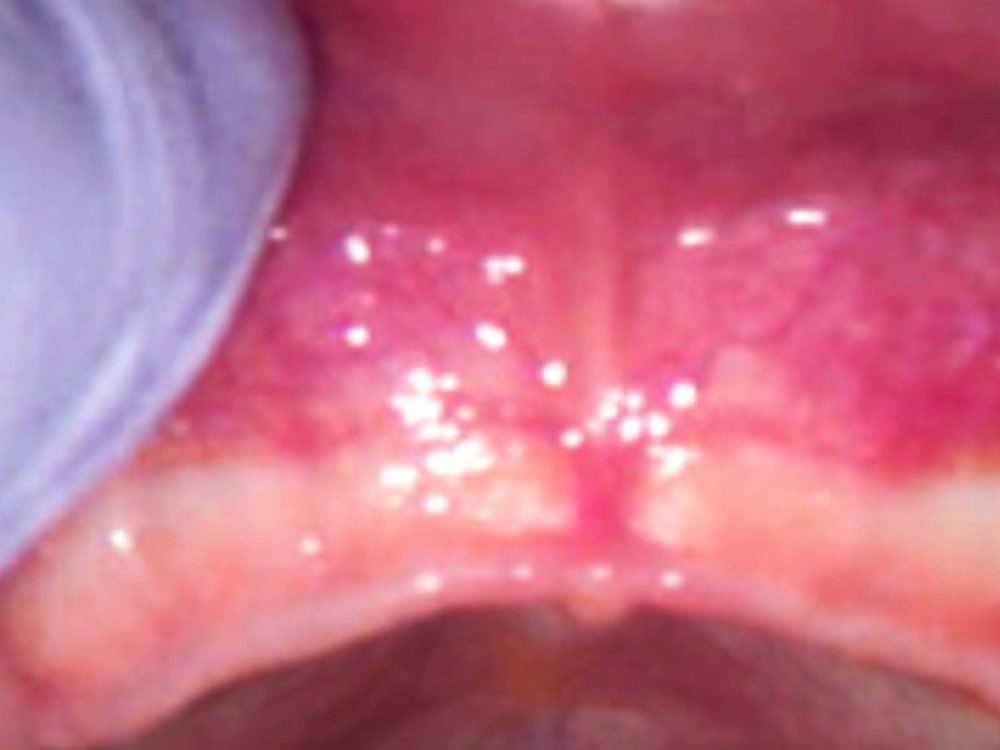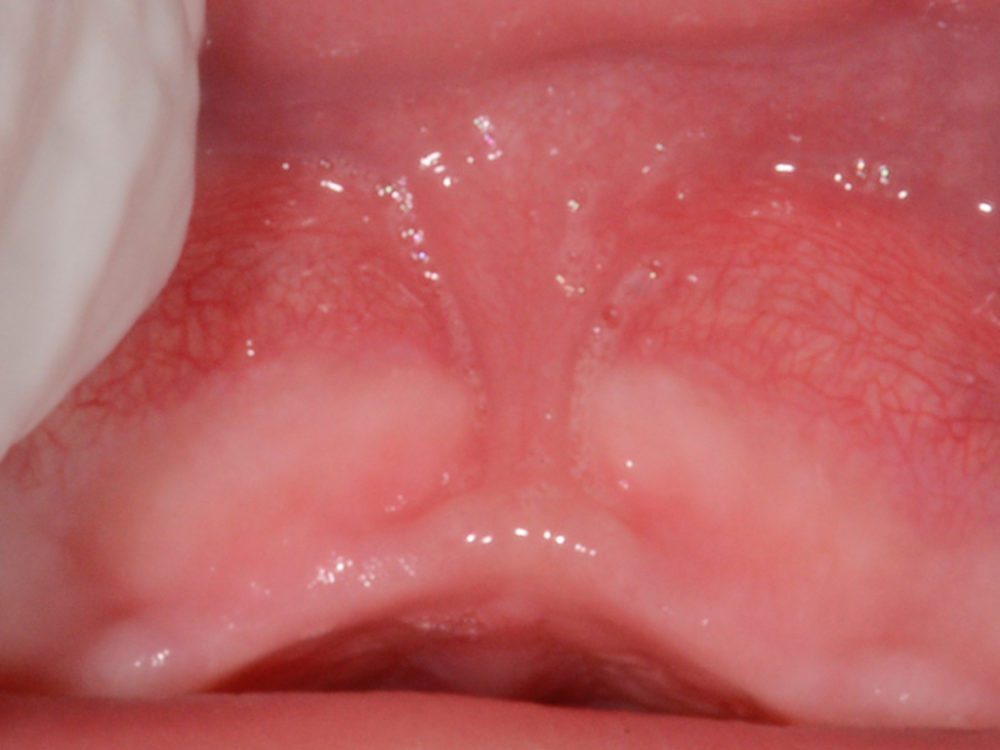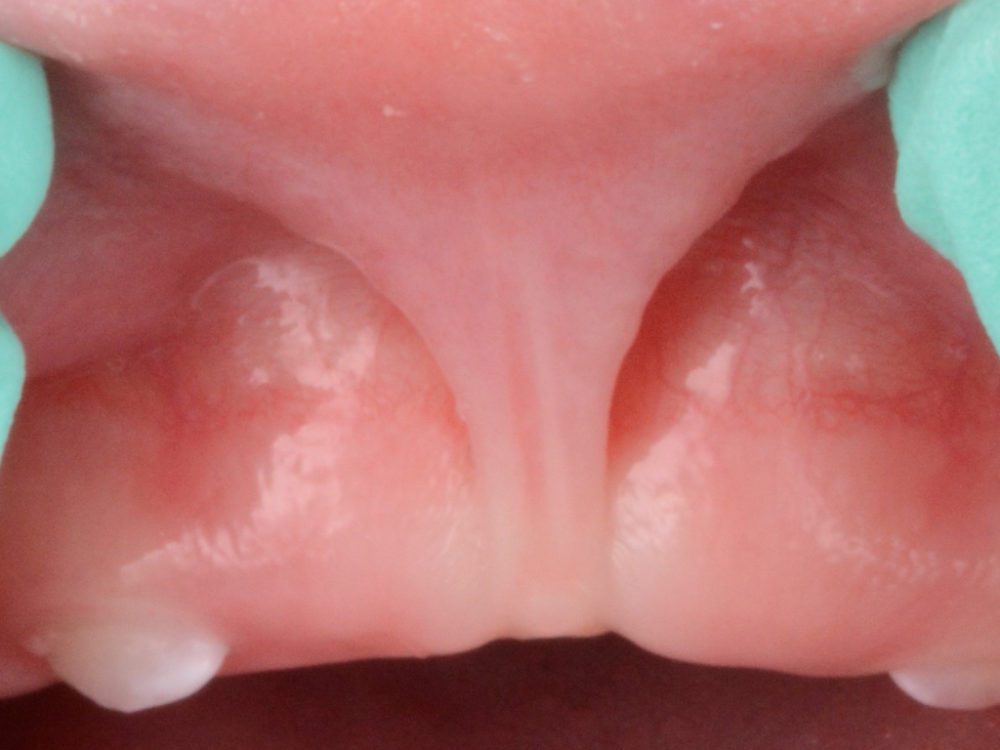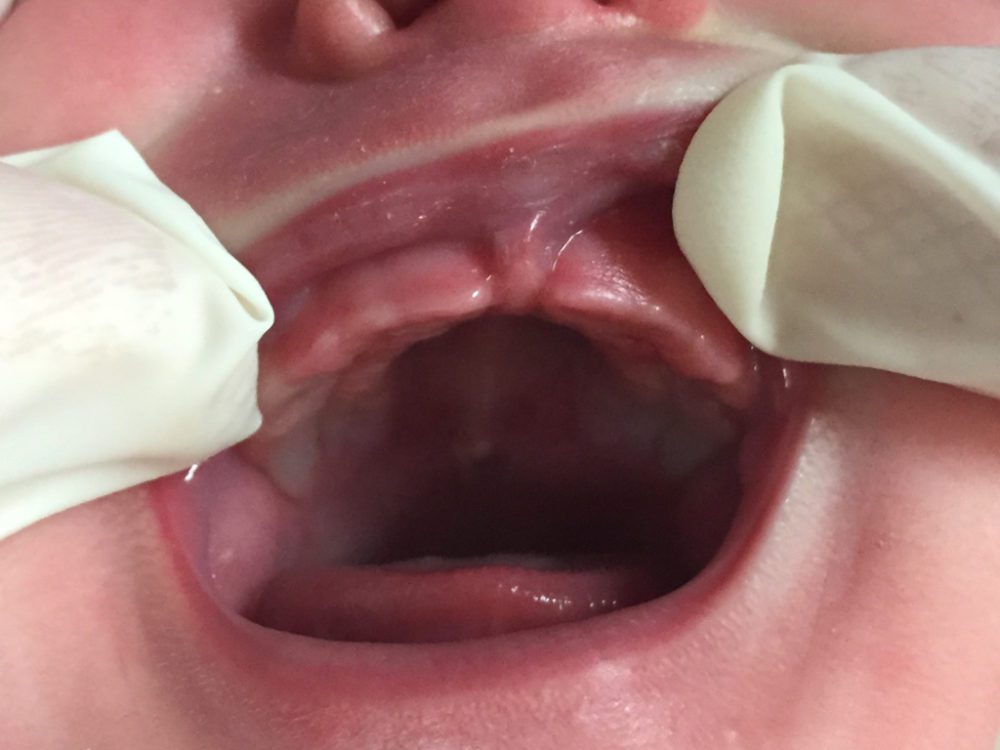What does a lip tie look like?
Providers use a classification system to describe the attachment or the lip tie. This system only indicates where the frenulum (tie) is attached between the lip and the upper jaw. Providers usually refer to four types or lip tie due to the Kotlow classification. (pictures below).
This system does not indicate the severity.
A class 1 lip tie is quite rare (no restriction in attachment).
A class 2 lip tie adheres to the gums somewhere in the middle above the gum line.
Type 3 can be a very flexible frenulum with no symptoms while a very tight frenulum (type 2) can give a whole range of symptoms.
Type 4 is therefore not any “worse” than type 2.
Although a tight type 4 obviously gives even less movement of the lip and can affect the ability of the lip to flange and hold on to the breast or bottle.
Babies and children manage to compensate really well with their jaw muscles and people can grow old with a lip tie often with hardly any symptoms.
Sometimes the upper lip tie creates a gap between the front teeth, but that is not always easy to predict exactly.
Brushing the front teeth can be difficult and painful with a tie “in the way”.
With debris stuck under a lip tie, caries may occur earlier in the upper front teeth. To determine if there is an impairment of the flange of the lip onto the breast a Lactation Consultant (IBCLC) can observe the breastfeeding. The Lactation Consultant lifts up the upper lip to see if it flanges out.
If there is blanching on the gum, there is tension. The tension may result in too little movement of the lips and ability to flange out and to open the mouth wide.




